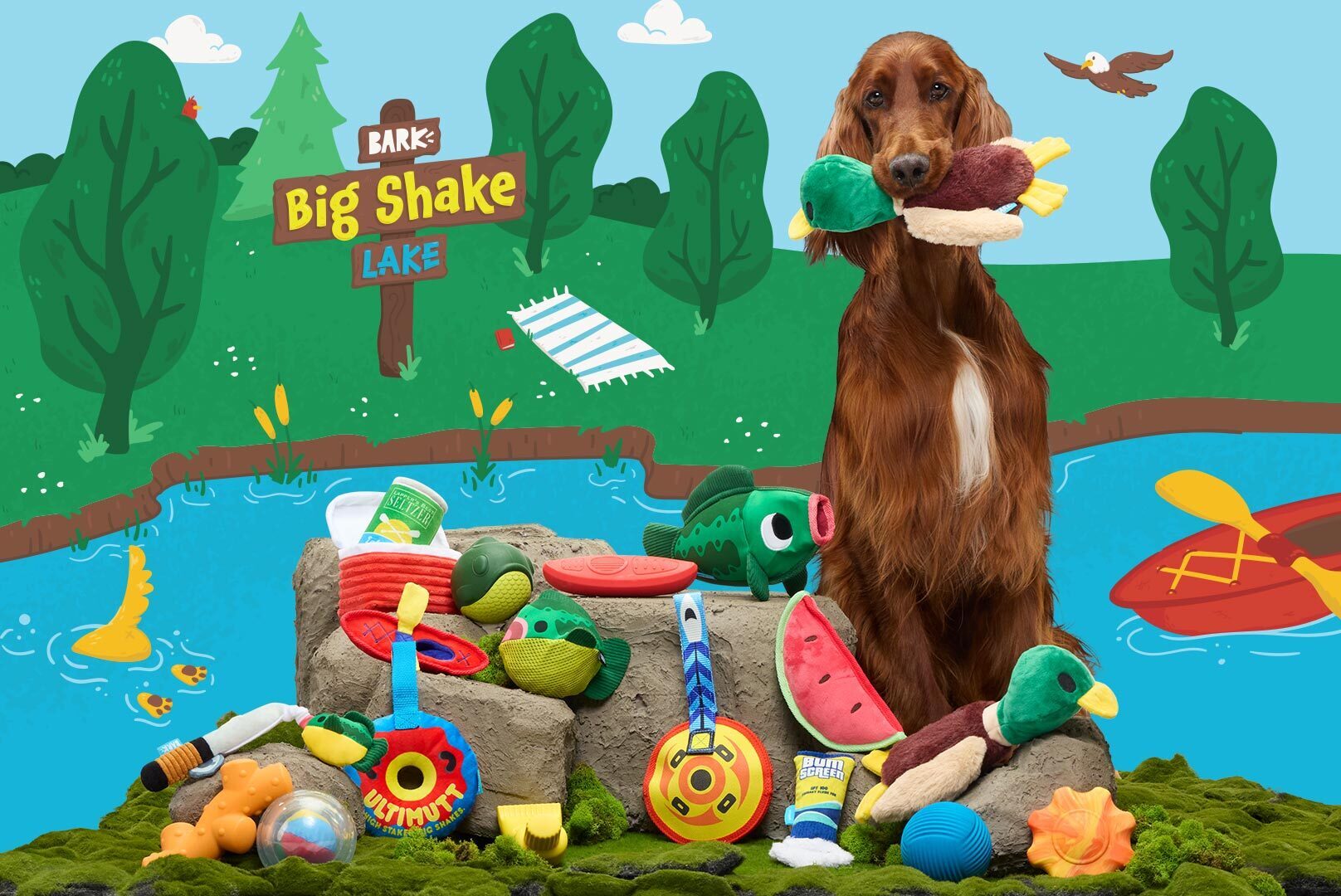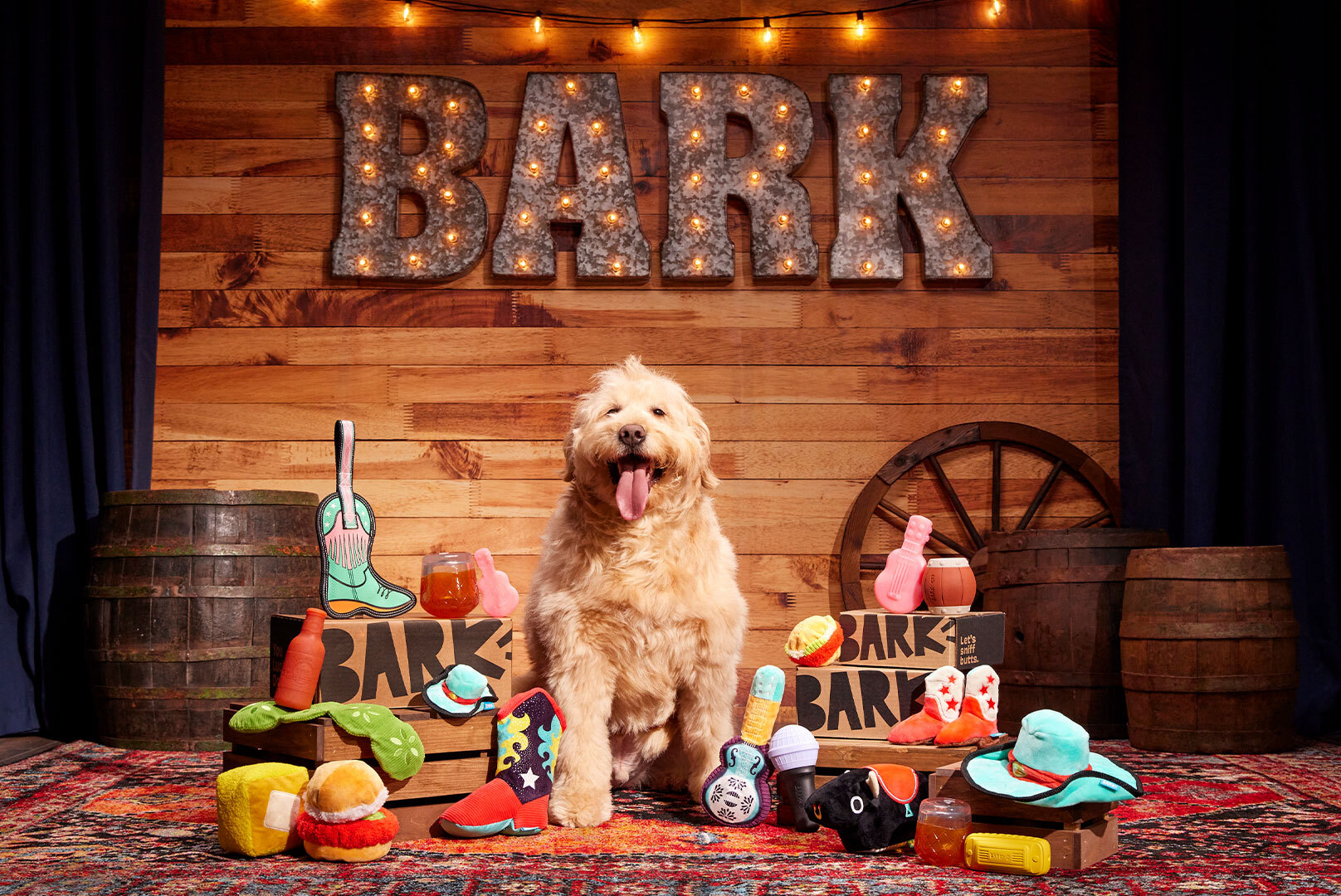For Pups With Short Attention Spans…
How much to feed your dog will depend on age, weight, activity level, and general health concerns. It’s best to consult the feeding chart on your chosen brand of dog food for portion size, and then break that up into 2-3 even meals per day. Additionally, your dog’s diet should be considerate of how much exercise they get per day, as well as how many treats you sneak in.
If you ask your dog, meal time is any time you set foot in the kitchen. Just like us, dogs don’t only eat when they’re hungry—as natural scavengers, they’re ready to eat whenever there’s food available. Between those hopeful eyes and that bottomless pit of a stomach, it can be tough to tell if they’re really hungry or just begging.
It all leaves you wondering, how much food should I feed my dog?
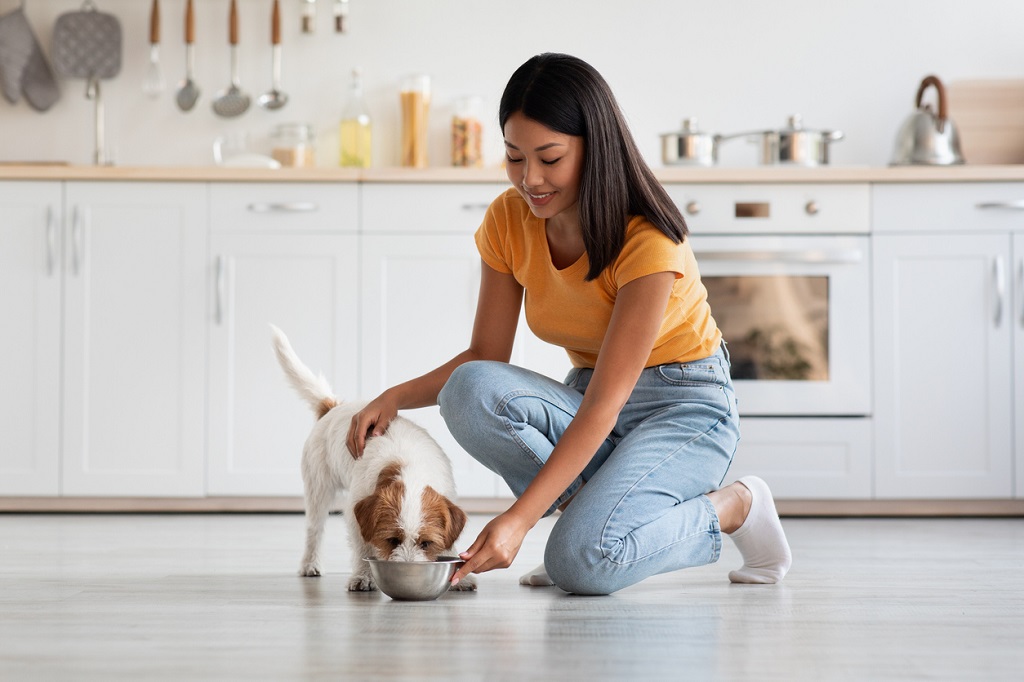

There are a few factors that impact how much food your dog needs, including their weight, age, and health. Keep reading as we take a closer look at how often you should be filling that food dish, plus tips on keeping your dog at an ideal weight. Let’s dig in!
How Much Food Does My Dog Need?
The amount of food a dog needs varies widely depending on the individual, so there’s no one-size fits all answer here. The factors to take into account for your dog include:
- Age – Puppies need more food than adult dogs, as they are growing and developing.1 They should be fed puppy food in several small meals spread throughout the day. A senior dog (dogs 7 to 12 years and up) may burn less energy and put on weight more easily. However, they may also absorb nutrients more poorly, so they should be given food especially formulated for seniors.
- Weight – After age, the next factor to consider is your dog’s weight. Oftentimes, your pup’s food packaging will include a feeding chart with weight ranges and recommended food amounts. However, if your dog is overweight or obese, their food intake may need to be reduced slightly until they lose weight. You can consult your veterinarian for guidance or the Association for Pet Obesity Prevention, which provides a chart of approximate daily caloric needs for average indoor pets.2
- Activity level – Although your dog’s weight will give you a rough estimate of how much food they need, your dog’s calorie needs also depend on activity level. If your dog is the one running laps around the dog park and playing fetch until your throwing arm wears out, use the high end of the feeding range for their weight. On the other hand, if you’ve got a couch pup-tato, opt for the low end of the range.
- Health conditions – Your dog’s health can also affect how much food they need. Dogs with health conditions such as diabetes or kidney disease may need special prescription diets. Pregnant dogs or nursing dogs also have special needs for extra calories and nutrients.3
Check the Brand’s Feeding Chart
Since the nutrient and calorie content of every dog food brand is different, dog food manufacturers are required to include a dog feeding chart on their packaging. Here’s an example from BARK Food’s Cock-a-Doodle-Chew and Little Buddy Bites recipes:
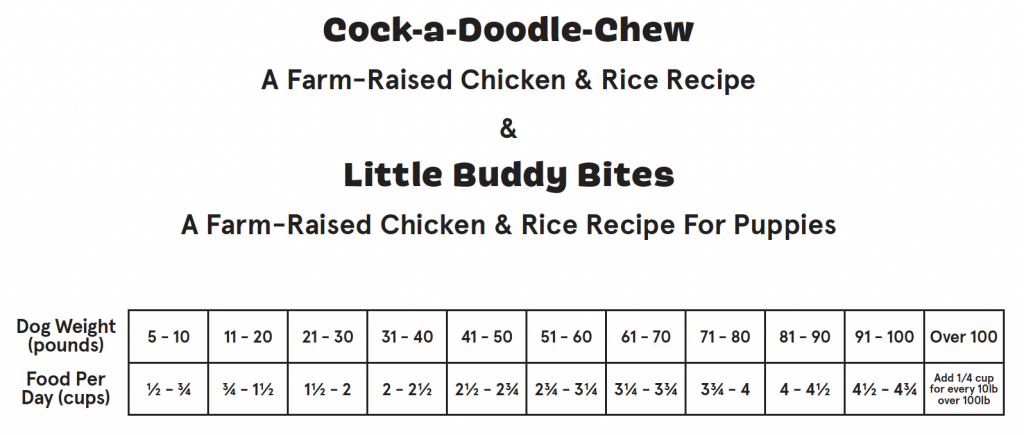

The chart will give a suggested daily feeding amount depending on your dog’s weight category. From there, you can:
- Divide it up – The recommended caloric amount will usually be the total for the day, so you’ll need to divide that amount by the number of meals you’re feeding your pup each day.
- Start low and work up – Most feeding charts suggest a serving size, of ½ to 1 cup per day. Use your dog’s activity level to determine whether to feed the lower or higher amount for their weight. It’s easier to put weight on than take it off, so it’s advised to start at the lower end and see if more is needed.
- Understand that every brand differs – Whenever you switch brands, be sure to consult the new feeding chart to make sure you’re still giving your dog the proper amount of food.
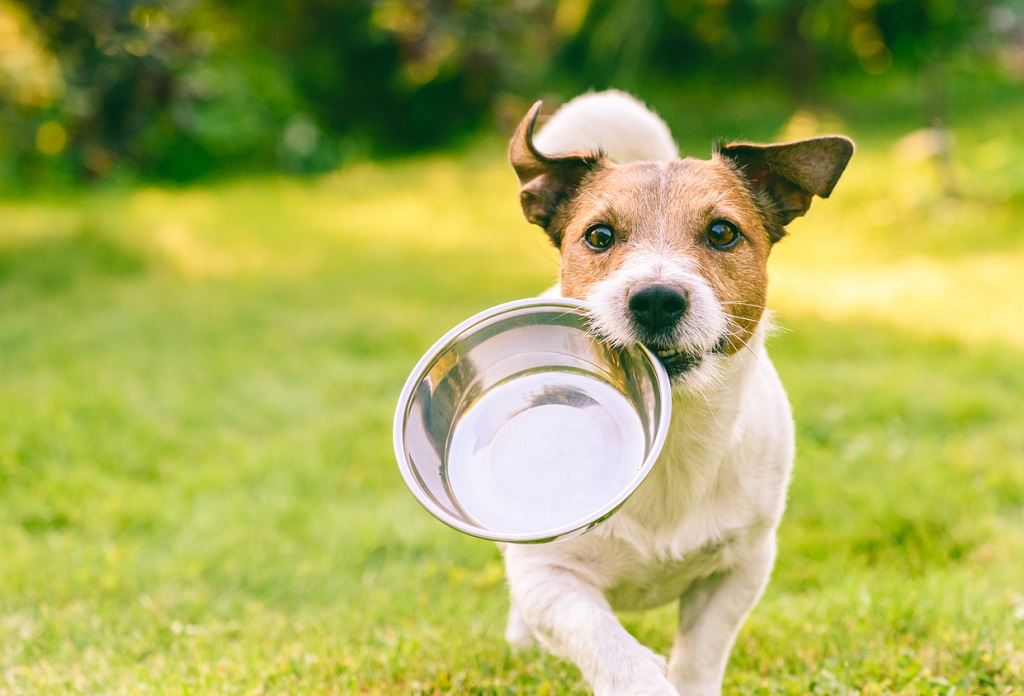

How Active Is My Dog?
If you have a very active dog, they may need more calories per day, meaning more frequent meals. But what is considered an active dog? Here are some rules of thumb used by food manufacturers when calculating feeding guidelines:4
- Low Activity – Less than one hour of active time per day. (For example, one leashed walk per day.)
- Moderately active – 1 to 3 hours of active time per day. (For example, one walk plus playtime at the dog park.)
- Very active – More than 3 hours of active time per day. (This isn’t common except in working dogs or dogs performing agility training or competitions.)
How Often Should I Feed My Dog?
There’s a lot of conflicting information out there on this topic. Once a day? Twice a day?
You might be tempted to feed whenever your dog gives you their big, pleading eyes, but if you do, your dog will likely end up with a feeding schedule fit for a hobbit: breakfast, second breakfast, elevenses, lunch, late lunch…you get the idea.
Your dog may be happy with their parade of treats, but excessive feeding can affect your pup’s health poorly.
That said, feeding once per day isn’t generally recommended in current veterinary medicine. Many dogs will suffer from nausea if their stomachs are empty for prolonged periods.5 Grazing or keeping the bowl filled also isn’t a good idea for most dogs—they’ll almost always overeat.
The ASPCA recommends a feeding schedule of two meals per day for most adult dogs.1 But your dog is an individual, so pay attention to his or her signals. Be prepared to break meals up into smaller, more frequent portions if your dog is very active or if you notice signs of nausea.


Why Does My Dog’s Weight Matter?
Dogs need to watch their waistlines just like their humans do, since excess weight gain can lead to several serious health problems in canines. Weight-related health problems can include:6
- Skeletal problems – Excess weight puts additional strain on your dog’s joints, which can lead to pain, osteoarthritis, and other mobility issues over time.
- Breathing difficulties – Being overweight can cause your dog to have difficulty breathing and may even lead to respiratory failure. This is especially important to watch for in flat-faced breeds like pugs and bulldogs.
- Heart disease – Carrying around extra weight puts a strain on your dog’s heart, which can eventually lead to heart failure.
- Diabetes – Obese dogs are more likely to develop diabetes, which can have serious consequences if left untreated.
- Liver disease – Fatty deposits in the liver can eventually lead to liver disease, which can be fatal.
Keeping your dog trim and fit also helps them stay happy and playful for as long as possible! If you’re concerned about your dog’s weight, talk to your veterinarian about safe strategies for healthy weight loss.
How Can I Tell if My Dog Is Overweight?
There are a few ways to check if your dog is overweight, normal weight, or underweight. Here are the signs to look for:3
- Underweight – A dog is too thin if you can easily see its spine, hip bones, and ribs from a distance. In fluffier dogs, place your thumbs on the dog’s spine and feel the sides with your fingers. If the vertebrae and rib bones are extremely prominent, the dog is too thin. Underfeeding leads to health problems over time such as osteoporosis, infections, and parasites. It also prevents proper development in puppies.3
- Normal or healthy weight – Looking down at your dog from above, check the shape of their back. You should be able to easily see the indentation of the waist just below the rib cage and above the hips. With your thumbs on your dog’s spine, you should be able to easily feel the ribs and some definition of the spine. Looking from the side, your dog’s stomach should tuck inward below the chest.
- Overweight – Again, looking down from above, check the shape of your dog’s sides. If there is no visible waist, or even an outward curve, your pup is too plump. When you feel for the ribs and spine, you may have to press firmly to feel the bones. In obese dogs, you may not be able to feel the ribs at all. You may also see visible deposits of fat in areas like the base of the tail, neck, and back.
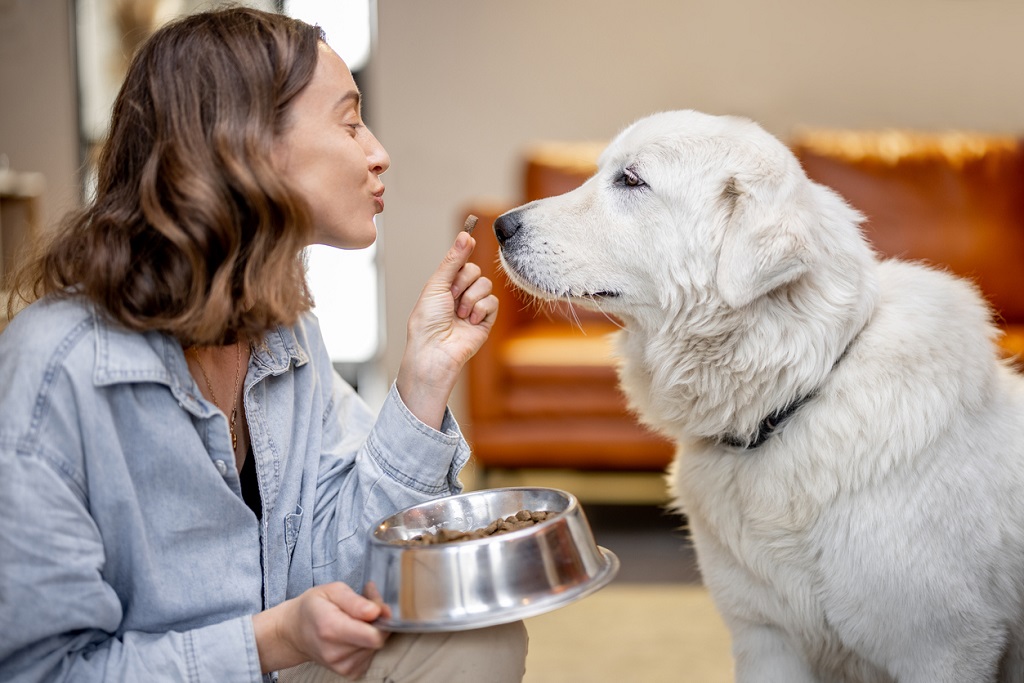

Healthy Weight Tips for Every Dog
If Fido is carrying a few extra pounds, he’s not alone. According to the Association for Pet Obesity Prevention, over 50% of dogs in the US are overweight or obese.7 But don’t worry—there are plenty of things you can do to help your furry friend lose weight and get back to a healthy size.
Giving your pup the right amount of healthy food is only the first step toward shedding pounds. Plenty of exercise and entertainment is also important for getting you both off the couch:
- Exercise – Dogs need at least 30 minutes of exercise a day and more if they are particularly active breeds like Australian shepherds or border collies. Luckily, there are lots of ways to add more activity to your schedule: Spend time every day on training, sign up for an obedience class, head to the dog park, or set up a doggy play date with another pup parent.
- Treats – Treats should make up no more than 5% of their daily caloric intake.1 Table scraps should be a total no-no—human food just doesn’t fit canine nutritional needs.
- Mental stimulation – Dogs evolved to search for food, not just scarf it out of a bowl. Use food dispensing toys to encourage your dog to use their brain and burn calories while they eat. Giving your dog a challenge at mealtime can help with behavior problems too.
Give Your Best Friend the Best Care With BARK
To keep your dog in tip-top condition, don’t overfeed and do make sure your dog’s daily routine includes exercise, fun, and mental stimulation—and be sure to choose a high-quality food that’s approved by the Association of American Feed Control Officials.
Now that you’ve got the scoop on exactly how to fill that supper dish, make feeding time even easier with a custom meal plan from BARK. BARK makes only high-quality, scientifically formulated food, treats, and supplements packed with all the nutrients good doggos need.
Make your pup’s day even better with a BARKBox full of toys and treats delivered right to your door. Barking at the UPS van is even better when it’s dropping off a BARKBox!
Sources:
- Association for the Prevention of Cruelty to Animals. Dog nutrition tips. https://www.aspca.org/pet-care/dog-care/dog-nutrition-tips
- Association for Pet Obesity Prevention. Dog and Cat Daily Caloric Needs. https://petobesityprevention.org/pet-caloric-needs
- National Academy of Sciences. Your dog’s nutritional needs. https://nap.nationalacademies.org/resource/10668/dog_nutrition_final_fix.pdf
- Waltham. Essential nutrition for cats and dogs, second edition. https://www.waltham.com/sites/g/files/jydpyr1046/files/2020-08/Essential%20cat%20and%20dog%20nutrition%20booklet%20V2%20-%20electronic%20version.pdf
- VCA Animal Hospitals. Feeding times and frequency for your dog. https://vcahospitals.com/know-your-pet/feeding-times-and-frequency-for-your-dog
- VCA Animal Hospitals. Obesity in dogs. https://vcahospitals.com/know-your-pet/obesity-in-dogs
- Association for Pet Obesity Prevention. 2021 press release & summary of the pet food, nutrition, & weight management opinion survey. https://petobesityprevention.org/2021





